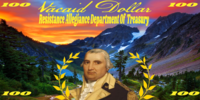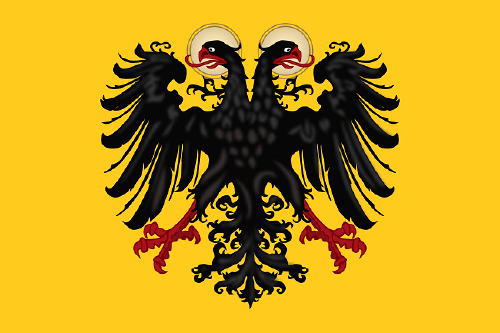| National Factbook |
| Flag: |

|
| Nation Name: |
Lan Fang |
| Leader Name: |
Min Yap |
| Currency: |

Botcaid Bucks |
| National Animal: |

Tiger |
| History: |
ðŸðŸ³ð˜ð—µ ð—°ð—²ð—»ð˜ð˜‚ð—¿ð˜†
Following the defeat of the Ming dynasty, the Manchu Qing offered several high-ranking Ming officials and military leaders positions in the Qing court in exchange for cessation of resistance activities. Zheng Zhilong, a Ming admiral and father of Koxinga, accepted the Qing offer, but was later arrested and executed for not ceding control of his military forces to the Qing cause when asked to do so. After learning of this whilst pursuing studies overseas, Koxinga pledged to assume his father’s position and control of his remaining forces in order to re-establish Ming control of China. With most of China controlled by the Qing, Koxinga discovered the situational strategic advantages provided by a retreat and occupation of Taiwan from the translator Ho-Bin who was working for the Dutch East India Company. Supplied by Ho-Bin with maps of the island, Koxinga marshalled his forces, estimated at 400 ships and 25,000 soldiers, and seized the Pescadores (also known as Penghu Islands) so as to utilize them as a strategic staging point from which to invade Taiwan, at the time controlled by the Dutch.
In 1661, Koxinga's fleet forced an entry to Lakjemuyse , and made landing around Fort Provintia. In less than a year, he captured Fort Provintia and besieged Fort Zeelandia; with no external help coming, Frederick Coyett, the Dutch governor negotiated a treaty, where the Dutch surrendered the fortress and left all the goods and property of the Dutch East India Company behind. In return, most Dutch officials, soldiers and civilians were allowed to leave with their personal belongings and supplies and return to Batavia (present-day Jakarta, Indonesia), ending the 38 years of Dutch colonial rule on Taiwan. Koxinga did, however, detain some Dutch "women, children, and priests" as prisoners. He then proceeded on a tour of inspection with a contingent of nearly 100,000 soldiers to "see with his own eyes the extent and condition of his new domain."
Realizing that developing his forces in Taiwan into a large enough threat to unseat the Qing would not be achieved in the short term, Koxinga began transforming Taiwan into a practically proper, albeit preferably temporary, seat of power for the southern Ming loyalist movement. Replacing the Dutch system of government previously used in Taiwan, Koxinga instituted a Ming-style administration, the first Chinese governance in Taiwan. This system of government was divided into six departments: civil service, revenue, rites, war, punishment, and public works. Great care was taken to symbolise support for the Ming legitimacy, an example being the use of the term guan instead of bu to name departments, since the latter is reserved for central government, whereas Taiwan was to be a regional office of the rightful Ming rule of China. Zheng Jing dutifully complied with the prescribed procedures for Ming officials by regularly presenting reports and paying tribute to the absent Ming Emperor. Formosa (Taiwan) was also renamed by Koxinga as Tungtu, though this name was later changed by his son, Zheng Jing, to Tungning.
Koxinga's son Zheng Jing attempted to reconcile with the Qing Dynasty to be an autonomous state. But due to Manchu customs being forced on him, Zheng Jing ended up forming the Kingdom of Tung Ning under house Zheng.
However, after Zheng Jing's death in 1683, the throne was passed to his illlegitimate son. This created large divides in the government and military. During this succession crisis, the Qing Dynasty invaded and annexed the Kingdom of Tung Ning, ending the Kingdom that lasted for roughly 22 years.
ð—œð—ºð—½ð—²ð—¿ð—¶ð˜‚ð—º ð—¼ð—³ ð—§ð˜‚ð—»ð—´ ð—¡ð—¶ð—»ð—´
In 1995, PRC loyalists in the Taiwanese Republic staged a coup to form a PRC loyal government. Documents show that PLA volunteers were sent to assist the PRC loyalists, now known as the February Red Coup The coup, was succesful enough to depose the original regime. However, the new premier stirred hostilities with the former Taiwanese military. One of the generals, James Yap, who is an indirect descendant of Koxinga, led the uprising. There was a stalemate between the new Taiwanese Red Army and the old Taiwanese Military. The UN stepped in and forced a ceasefire. A referendum was held to determine the future of Taiwan. Despite being a monarchist, James's rule was much more prefered as opposed to being a PRC puppet. On February 18th, 2001. James was crowned King James I of House Yap. This marked the beginning of the Imperium of Tung Ning |
| Geography |
| Continent: |
Asia |
| Land Area: |
93,341.72 sq. km |
| Terrain: |
Tung Ning is an island state in East Asia. The main island, known historically as Formosa, makes up 99% of the area controlled by House Yap, measuring 35,808 square kilometres (13,826 sq mi) and lying some 180 kilometres (112 mi) across the Taiwan Strait from the southeastern coast of mainland China. The East China Sea lies to its north, the Philippine Sea to its east, the Luzon Strait directly to its south and the South China Sea to its southwest. Smaller islands include a number in the Taiwan Strait including the Penghu archipelago, the Kinmen and Matsu Islands near the Chinese coast, and some of the South China Sea Islands.
The main island is a tilted fault block, characterized by the contrast between the eastern two-thirds, consisting mostly of five rugged mountain ranges parallel to the east coast, and the flat to gently rolling plains of the western third, where the majority of Taiwan's population reside. There are several peaks over 3,500 m, the highest being Yu Shan at 3,952 m (12,966 ft), making Taiwan the world's fourth-highest island. The tectonic boundary that formed these ranges is still active, and the island experiences many earthquakes, a few of them highly destructive. There are also many active submarine volcanoes in the Taiwan Straits.
The eastern mountains are heavily forested and home to a diverse range of wildlife, while land use in the western and northern lowlands is intensive. |
| Highest Peak: |
Yu Shan,
3,952 meters
|
| Lowest Valley: |
,
0 meters
|
| Climate: |
Tung Ning lies on the Tropic of Cancer, and its general climate is marine tropical. The northern and central regions are subtropical, whereas the south is tropical and the mountainous regions are temperate. The average rainfall is 2,600 millimetres (100 inches) per year for the island proper; the rainy season is concurrent with the onset of the summer East Asian Monsoon in May and June.[115] The entire island experiences hot, humid weather from June through September. Typhoons are most common in July, August and September. During the winter (November to March), the northeast experiences steady rain, while the central and southern parts of the island are mostly sunny. |
| People & Society |
| Population: |
8,369,935 people |
| Demonym: |
Taiwanese |
| Demonym Plural: |
Taiwanese |
| Ethnic Groups: |
Han Chinese - 78.4%
Aboriginals - 14.5% |
| Languages: |
Mandarin(Chinese) - 78.4%
Hokkien - 14.4%
English - 7.1% |
| Religions: |
Christianity - 60.0%
Kemetism - 20.0%
Unaffiliated - 10.0% |
| Health |
| Life Expectancy: |
69 years |
| Obesity: |
0% |
| Alcohol Users: |
0% |
| Tobacco Users: |
0% |
| Cannabis Users: |
0% |
| Hard Drug Users: |
0% |
| Economy |
| Description: |
|
| Average Yearly Income: |
$230.56 |
| Gross Domestic Product (GDP): |
$14,996,797,421.00 |
| GDP per Capita: |
$1,791.75 |
| Gross National Income (GNI): |
$6,782,549,355.00 |
| Industries: |
|
| Military |
| History: |
The Imperial Armed Forces has its roots in the Republic of China Army which was tasked with defending the Island from the PRC. It was reformed into the Imperial Armed Forces in 2002.
Today, Tung Ning boasts a fairly modern military, this is because Tung Ning has a large number of enemies.
ð—œð—ºð—½ð—²ð—¿ð—¶ð—®ð—¹ ð—šð˜‚ð—®ð—¿ð—±
The Imperial Guard is formed from the remnants of the Republican Ground Forces. The exact number of troops and AFVs in the Imperial Guard has never been disclosed. However, Imperial Guard Regiments have seen regular combat due to overseas deployments as peacekeeping forces and volunteer forces. Standard issue firearm in the Imperial Guard regiments would be the TN-04 Assault Rifle, which is locally produced by Tung Ning's robust military industry. Tung Ning also produces it's own MBTs but not much is really known about them.
ð—œð—ºð—½ð—²ð—¿ð—¶ð—®ð—¹ ð—”ð—¶ð—¿ ð—”ð—¿ð—º
The Imperial Air Arm was established in 2005. It's primary mission is to aid Imperial Guard regiments in combat as well as establishing air superiority. They have also been used to do bombing runs into enemy cities. The Imperial Air Arm boasts a small fleet of T-5 "Buzzard" Gen-2 Multirole Aircraft. It also owns a couple of G-1 High altitude Tactical Bombers used for carpet bombing should the situation arise.
ð—œð—ºð—½ð—²ð—¿ð—¶ð—®ð—¹ ð—¡ð—®ð˜ƒð˜†
The Imperial Navy is formed in 2005. It used to boast a sizable fleet of warships procured from various countries. However, due to age and cost of maintainence, most of these ships are decommissioned. The Imperial Navy doesn't really have the strike capabilities of it's peak era anymore.
ð—œð—ºð—½ð—²ð—¿ð—¶ð—®ð—¹ ð—¡ð˜‚ð—°ð—¹ð—²ð—®ð—¿ ð—£ð—¿ð—¼ð—´ð—¿ð—®ð—º
[REDACTED] |
| Soldiers: |
435,000 |
| Tanks: |
36,250 |
| Aircraft: |
2,175 |
| Ships: |
137 |
| Missiles: |
12 |
| Nuclear Weapons: |
3 |
| Last Updated: 03/30/2020 04:51 pm |














